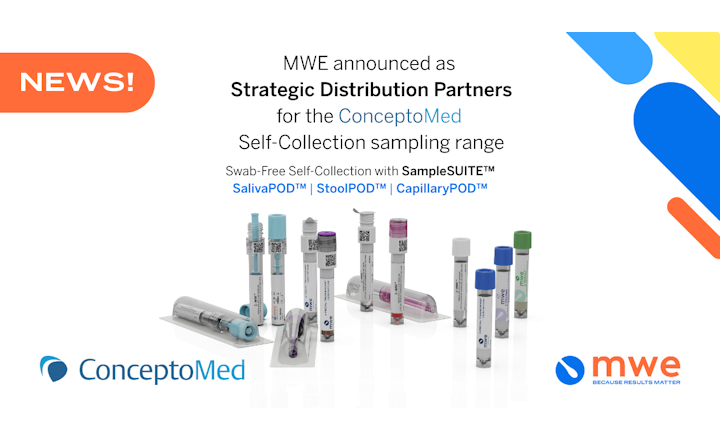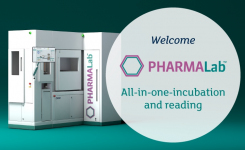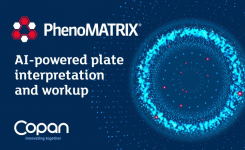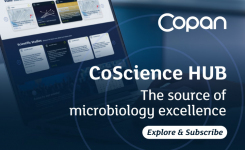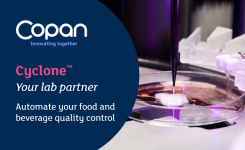Once simple, cotton-tipped sticks, swabs have evolved into a crucial link between patients and advanced automated diagnostics.
As robotic processing systems help address the challenges of centralized high-throughput labs, today's specimen collection and transport kits are increasingly designed to work seamlessly with these automated processing systems.
Future swabs will carry much more than just samples, taking multitasking to a new level. Automated read identifiers, such as barcodes or RFID (Radio-Frequency Identification), will provide real-time, accurate monitoring of sample movements, minimizing the risk of loss or misplacement and reducing manual errors and variability in traditional pre-analytical processes. Accessory biosensors and trackers will help patients understand when to get tested or collect their own biological samples.
This evolution highlights the growing importance of seemingly simple tools in our complex healthcare landscape. It promotes a “meta-preanalytic” approach encompassing all these new techniques to enhance result delivery and improve workflow efficiency.
In this interview with Giorgio Triva, Copan Next's Chief Innovation Manager, we get insights into how swabs adapt to modern diagnostic needs, revolutionize preanalytics, and maintain compliant, cost-effective, and efficient labs.
The humble swab has come a long way, but its journey is far from over!
Q: What is meant by preanalytics, what role do swabs play?
Giorgio: Preanalytics refers to the stage before actual diagnostic testing, including sample collection, handling, and initial data capture. Swabs play a crucial role as they are the primary tool for collecting and transporting biological samples under optimal conditions. Swabs essentially connect the patient with diagnostic processes. It ensures the safety of use, sample appropriateness, and analyte integrity preservation, which are all fundamental for reliable results in diagnostics. Anyhow, this simple role is quite limiting in today’s landscape, as Copan is working on projects to elevate the swab contribution in the path toward diagnostics. We are working to overcome the term preanalytics, with something I like to call "meta-preanalytics."
Q: Could you explain the meaning of “meta-preanalytics”?
Giorgio: From Greek, meta means “Going beyond, transcending,” and that’s what we want to do with preanalytics. I’m referring to building an extended framework around traditional preanalytical practices, where we consider not only the process of collecting, transporting, and processing biological samples but also explore ways to optimize these steps with advanced tools, data, and decision support technologies. While standard preanalytics might focus on an efficient sample collection, meta-preanalytics helps accurately determine when and how samples should be taken.
For instance, meta-preanalytics essentially pushes the boundaries of preanalytical science, considering additional factors like the timing, quality, and context of sample collection to improve diagnostic accuracy and efficiency. With this concept, I don’t want to limit it to swabs: Our idea of "meta-preanalytics" integrates tools like decentralized health devices, which could allow for preliminary health assessments even before a sample reaches a laboratory. Such tools could indicate whether a sample is necessary, monitor an individual's health conditions, and guide the testing professional support when needed, bridging the gap between patient needs and lab diagnostics.
Q: How have swabs changed to meet the demands of modern diagnostics, and how will they evolve?
Giorgio: Modern swabs have already reached a high-performance standard, ensuring samples are collected, preserved, and processed with excellent performance. Moreover, at Copan, we guarantee that our swabs are compatible with the leading lab's analytical techniques and platforms.
In the future, we envision swabs that go beyond traditional sample collection to incorporate features that enhance traceability, support advanced diagnostic needs, and drive the patient journey before the actual diagnosis – while maintaining specimen quality.
These improvements may focus on integrating data capabilities, such as using RFID or barcode labels for better traceability and ensured sample identity throughout handling. This means these swabs will be able to collect and retrieve some info – such as patient history – that can be linked to the sample itself, for an end-to-end control from the collection site to the diagnostic platforms and reduced errors.
Q: What are the expected benefits of meta-preanalytics?
Giorgio: Meta-preanalytics extends beyond standard pre-analytics to consider the timing, method, and conditions under which samples are taken and processed. This concept involves developing technologies that support effective sample collection and anticipate when a sample should be taken based on patient needs or environmental markers. Expected benefits include higher diagnostic accuracy, the best sampling timing, better decision-making aids, and increased capacity for personalized medicine by supporting timely intervention and tailored treatment decisions based on the body’s signals. This concept can be illustrated through patient-centric applications such as self-collection devices for home testing. These technologies empower patients, especially in non-clinical settings, to actively participate in their health monitoring, while the information gathered helps to create a richer diagnostic context before reaching a lab. In this way, meta-preanalytics enhances the entire diagnostic ecosystem by refining data collection and increasing the relevance and efficiency of subsequent analyses.
Q: Self-collection is increasingly seen as a way to access wider populations; is this the future for swabs?
Giorgio: Yes, self-collection appears to be one of the key directions for the future of swabs, especially in widening access for populations who may otherwise struggle to visit a clinical setting. Modern swabs have already changed the approach to diagnostics from the Patient’s point of view, enabling population-wide testing and increasing participation in clinical studies and screening programs, especially for HPV and cervical cancer prevention. Self-collection aligns with meta-preanalytics by allowing individuals to collect samples at home, thanks to proper guidelines. Like traditional collection, self-collection starts with a diagnostic need, so think for a second: I, patient, how can I know when I need to be tested, or must I self-collect a sample? This may sound redundant in large-scale screening efforts, such as HPV screening, where external agencies advise individuals to self-sample. However, user-friendly diagnostic tools are needed for broader adoption of personalized medicine to help non-clinicians understand when it is advisable to self-collect their own sample, thus promoting better health autonomy and more efficient healthcare access.
Q: What are the challenges when switching to new sampling technologies?
Giorgio: Switching swab technology involves technical, operational, and infrastructural challenges. New suppliers may require laboratories to invest in compatible barcode or RFID reading equipment, particularly if advanced tracking technologies are used. The change can necessitate new training for staff and adjustment of existing processes, which may hinder adoption if laboratories cannot justify the investment. Additionally, a healthcare adoption and an industry-wide alignment on technologies, such as standardized labeling, could improve widespread use, but are challenging due to the need for collaboration across the diagnostic supply chain. In my opinion, the greatest challenge to overcome is to embrace this change on a large scale, with many companies, laboratories, and operators adapting to a change that, by its nature, requires all the stakeholders on board to be effective.
Discover state-of-the-art sample collection, and contact Copan to discover what’s behind meta-preanalytics.
About Giorgio Triva









